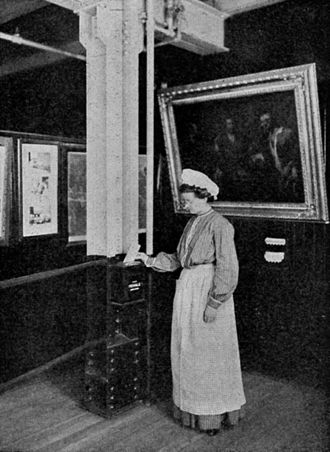By CHAD TERHUNE
In many ways, the healthcare industry has been a great friend to the U.S. economy. Its plentiful jobs helped lift the country out of the Great Recession and, partly due to the Affordable Care Act (ACA), it now employs 1 in 9 Americans—up from 1 in 12 in 2000.
As President Trump seeks to fulfill his campaign pledge to create millions more jobs, the industry would seem a promising place to turn. But the business mogul also campaigned to repeal the ACA and lower healthcare costs—a potentially serious job killer. It’s a dilemma: One promise could run headlong into the other.
“The goal of increasing jobs in healthcare is incompatible with the goal of keeping healthcare affordable,” said Harvard University economist Katherine Baicker, who sees advantages in trimming the industry’s growth. “There’s a lot of evidence we can get more bang for our buck in healthcare. We should be aiming for a healthcare system that operates more efficiently and effectively. That might mean better outcomes for patients and fewer jobs.”
But the country has grown increasingly dependent on the health sector to power the economy—and it will be a tough habit to break. Thirty-five percent of the nation’s job growth has come from healthcare since the recession hit in late 2007, the single-biggest sector for job creation.
Hiring rose even more as coverage expanded in 2014 under the health law and new federal dollars flowed in. It gave hospitals, universities and companies even more reason to invest in new facilities and staff. Training programs sprang up to fill the growing job pool. Cities welcomed the development—and the revenue. Simply put, rising health spending has been good for some economically distressed parts of the country, many of which voted for Trump last year.
In Morgantown, W.Va., the West Virginia University health system just opened a 10-story medical tower and hired 2,000 employees last year. In Danville, Pa., the Geisinger Health System has added more than 2,200 workers since July and is trying to fill 2,000 more jobs across its 12 hospital campuses and a health plan. Out West, the UCHealth system in Colorado expanded its Fort Collins hospital and is building three hospitals in the state.
In cities such as Pittsburgh, Cleveland and St. Louis, healthcare has replaced such industries as coal and heavy manufacturing as a primary source of new jobs. “The industry accounts for a lot of good middle-class jobs and, in many communities, it’s the single-largest employer,” said Sam Glick, a partner at the Oliver Wyman consulting firm in San Francisco. “One of the hardest decisions for the new Trump administration is how far do they push on healthcare costs at the expense of jobs in healthcare.”
House Republicans, with backing from Trump, took the first swipe. Their American Health Care Act sought to roll back the current health law’s Medicaid expansion and cut federal subsidies for private health insurance. The GOP plan faltered in the House, but Republican lawmakers and the Trump administration are still trying to craft a replacement for the ACA.
Neither the ACA nor the latest Republican attempt at an overhaul tackle what some industry experts and economists see as a serious underlying reason for high healthcare costs: a system bloated by redundancy, inefficiency and a growing number of jobs far removed from patient care.
Labor accounts for more than half of the $3.4 trillion spent on U.S. healthcare, and medical professionals from health aides to nurse practitioners are in high demand. But the sheer complexity of the system also has spawned jobs for legions of data-entry clerks, revenue-cycle analysts and medical billing coders who must decipher arcane rules to mine money from human ills.
For every physician, there are 16 other workers in U.S. healthcare. And half of those 16 are in administrative and other nonclinical roles, said Bob Kocher, a former Obama administration official who worked on the ACA. He’s now a partner at the venture capital firm Venrock, in Palo Alto, Calif.
“I find super-expensive drugs annoying and hospital market power is a big problem,” Kocher said. “But what’s driving our health-insurance premiums is that we are paying the wages of a whole bunch of people who aren’t involved in the delivery of care. Hospitals keep raising their rates to pay for all of this labor.”
Take medical coders. Membership in the American Academy of Professional Coders has swelled to more than 165,000, up 10,000 in the past year alone. The average salary has risen to nearly $50,000, offering a path to the American Dream.
“The coding profession is a great opportunity for individuals seeking their first job, and it’s attractive to a lot of medical professionals burned out on patient care,” said Raemarie Jimenez, a vice president at the medical coding group. “There is a lot of opportunity once you’ve got a foot in the door.”
Some of these back-office workers wage battle every day in clinics and hospitals against an army of claims administrators filling up cubicles inside insurance companies. Overseeing it all are hundreds of corporate vice presidents drawing six-figure salaries.
Administrative costs in U.S. healthcare are the highest in the developed world, according to a January report from the Organization for Economic Cooperation and Development. More than 8 percent of U.S. health spending is tied up in administration while the average globally is 3 percent. America spent $631 for every man, woman and child on health-insurance administration for 2012, compared with $54 in Japan.
America’s huge investment in healthcare and related jobs hasn’t always led to better results for patients, data show. But it has provided good-paying jobs, which is why the talk of deep cuts in federal health spending has many people concerned.
Linda Gonzalez, a 31-year-old mother of two, was among the thousands of enrollment counselors hired to help sign up Americans for health insurance as the ACA rolled out in 2014. The college graduate makes more than $40,000 a year working at an AltaMed enrollment center, tucked between a Verizon Wireless store and a nail salon on a busy street in Los Angeles.
In her cramped cubicle, families pull up chairs and sort through pay stubs and tax returns, often relying on her to sort out enrollment glitches with Medicaid. As the sole breadwinner for her two children, ages 9 and 10, she counts on this job but isn’t sure how long it will last.
“A lot of people depend on this,” she said one recent weekday. “It’s something I do worry about.”










